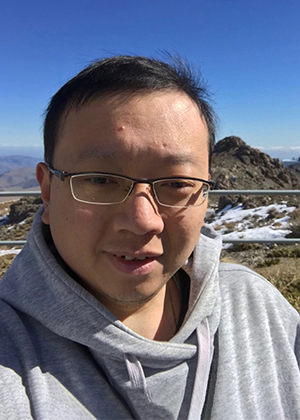USTC Astronomy Colloquium Series: 2022 Spring
Fast Transient Studies with Deep/High-cadence Time-domain Surveys
Ji-an Jiang 博士
东京大学Kavli IPMU
2022/3/1, 4:00pm , 腾讯会议ID:858 7758 4442, 密码:868058

报告人:
姜继安,东京大学Kavli IPMU特任研究员(IPMU Fellow)。本科就读于华中师范大学物理科学与技术学院。毕业后前往日本东京大学继续深造,2019年3月获得博士学位。博士在读期间兼任日本学术振兴会特别研究员(JSPS Fellow)。主要研究兴趣包括利用大视场望远镜开展时域巡天,Ia型超新星以及快速演化暂现源的前身星及爆发机制的研究,超新星宇宙学,多信使天文学。于2015年建立并主持Subaru/HSC极早期超新星巡天项目“MUSSES”至今。同时作为日本HSC SSP时域巡天项目组及东京大学Tomo-e Gozen时域巡天项目核心成员开展超新星及其他暂现源研究。2018年加入日本引力波电磁对应体跟踪观测项目(J-GEM)。自2014年起作为多个项目负责人累计获得超过1500小时地面光学、射电以及空间望远镜观测时间。摘要:
Transients with fast brightness variance in UV/optical wavelengths (”fast transients,' such as early-phase supernovae, fast blue optical transients, kilonovae) are of great interest in time-domain astronomy. Although great progresses in time-domain astronomy have been made via wide, shallow, and day(s)-cadence surveys, the limited observing depth and low time resolution make traditional time-domain surveys hard for fast-transient studies. In this talk, I will focus on our previous/ongoing studies of early-phase Type Ia supernovae and fast blue optical transients via deep (Subaru/HSC) and high-cadence (Kiso/Tomo-e) wide-field surveys. As one of the most powerful wide-field survey facilities in the 2020s, I will briefly talk about the role that the 2.5m Wide-field Survey Telescope (WFST) can play in fast-transient studies during the golden era of time-domain surveys. 邮编:230026 ,
邮编:230026 ,  联系电话: 0551-63601861
联系电话: 0551-63601861 Email:
Email: